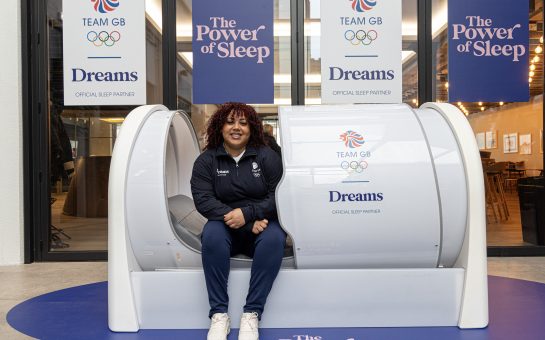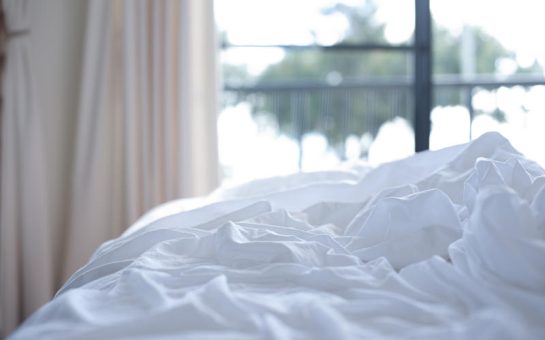The ideologies surrounding naps and napping are often varying and diverse, but one thing that seems to be at the forefront of the napping diaspora is that it can be good for you – you just need to know how to do it properly.
Sufficient sleep and good sleep habits are key when it comes to productivity and overall health. In turn, when you’re not sleeping properly the effects can be apparent in the way that you navigate the day. A study has revealed that the amount of adults in the USA who wake up feeling rested are much lower than those who do not. The reasoning for this can range from not getting enough hours of sleep to the actual quality of sleep being compromised. This is why napping can be a great way to reset your body and give it the rest that it might be missing out on.
Why is napping actually good?
A nap itself can be defined as a light and short sleep, which more often than not takes place during the day. Naps are a personal choice and whilst some people find them effective in making them recharge, others find them disruptive to their sleep and generally unhelpful. The Journal of Sleep Research stated that even in well rested people, naps have shown to improve performance in areas such as logical reasoning and symbol recognition and can even be great for your mood.
The Sleep Foundation categorised naps into different categories based on the function that they serve:
- Recovery Nap: A Recovery Nap does exactly what it says on the tin and is taken as a way of combating the tiredness from a rough night’s sleep for the night before. These types of naps are often taken to compensate for sleep loss.
- Prophylactic Nap: This type of nap is taken as a precautionary nap or in preparation for sleep loss. For example, when travelling or working night shifts, you may schedule in a Prophylactic Nap to prevent sleepiness later on.
- Appetitive Nap: With this type of sleep, it is simply taken for the enjoyment of napping and the feeling gained after having an Appetitive Nap. It can leave you feeling relaxed and be a mood uplifting tactic.
- Fulfilment Nap: The Fulfilment Nap is a way to fulfil the needs of an individual and their sleep requirements. For instance, with younger children, there is a greater requirement for sleep and is often scheduled in their days.
- Essential Nap: This form of napping is when you as an individual have a greater need for sleep. This can happen when you are feeling unwell and are in need of rest, as sleeping can promote healing and fighting off infection and illness.
With these various types of naps that can be taken, it’s safe to say that sleep is most definitely king.
Napping in the workplace
Napping itself is not an action that can be taken up anywhere and the least likely place you’d think to nap is of course the workplace, but companies are accommodating more and more to the needs of the midday nap.
Many of us are working from home so have the relative freedom to nap whenever we would like to, but what about in the office? There are a range of reasons why we would need to nap aside from the lack of sleep from the night before. It can sometimes be due to strain on the eyes from being on the computer for long periods of time and needing a nap to rest and recover the eyes.
It seems that more and more companies, such as Uber, Google, Zappos and even Ben and Jerry’s provide a space for employees to rst up in the middle of the day in order to boost productivity and creativity. It wouldn’t be a far off request to enquire about a space to take npp during your break to recharge while at work. Even if not a dedicated space, sometimes just moving away from your desk and occupying a space on a different floor to sit and take a daytime snooze will do the job if you feel like you benefit from taking naps.
When feeling lethargic in the middle of the day, make a note of when this happens to you. It might be a rhythmic pattern, even if you got ample sleep the night before and that’s your body telling you that a nap might do you the world of good.
How to nap effectively
When it comes to napping and finding the right balance for it varies from person to person, but experts have compiled research to investigate the best amount of time to nap for. A study from The University of Michigan found that people who took a 60 minute midday nap had a greater tolerance for frustration than people who comparatively didn’t. Jennifer Goldshmied led the research and found that naps could help us regulate our emotions and it isn’t just a case of passing the time.
Further studies have shown that the ideal time for someone to benefit from the full positives of napping is 60 to 90 minutes. The effects of napping within this study have even shown to have a positive effect on people who had a full rested night’s sleep the night before. It is an additional benefit to taking a 60 – 90 minute midday nap on top of a good night’s sleep. Try swapping out your afternoon caffeine with a nap and see how you feel, take a bit of time to trial and error what works for you.
Finding the optimum nap time for you is vital, as over napping or excessive sleep can cause grogginess and in extreme cases systemic inflammation. Finding a supportive environment and generally adopting healthy habits in your life will increase the effectiveness of your naps.


